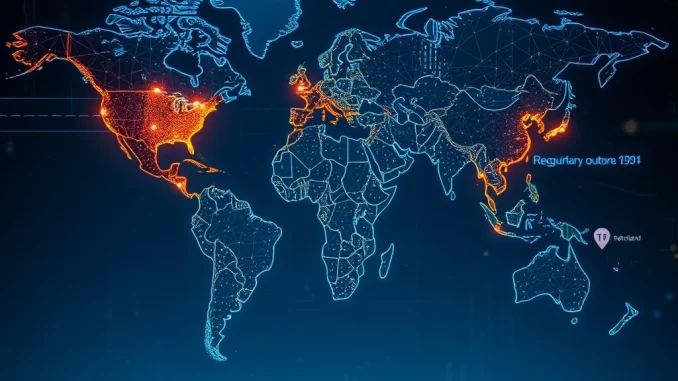
Tether, the issuer of the world’s largest stablecoin by market capitalization, USDT, has made a significant announcement regarding its future strategic direction. In a recent interview, Tether CEO Paolo Ardoino confirmed the company’s primary focus will remain squarely outside the United States market.
Why is Tether Shifting Away from the US Amidst Crypto Regulations?
According to Ardoino, the decision is largely driven by the current regulatory climate within the United States. The U.S. has seen increasing scrutiny and uncertainty surrounding stablecoins and other digital assets. This lack of clear, comprehensive regulations creates a challenging environment for companies like Tether, which prioritize stability and predictability for their operations.
Instead of navigating this complex and evolving landscape, Tether is doubling down on regions where it sees greater potential for growth and perhaps a more welcoming or less ambiguous regulatory stance at present. This strategic pivot is a clear signal of how regulatory frameworks, or the lack thereof, can influence the global movements of major crypto players.
Exploring the Potential in Emerging Markets Crypto Adoption
Tether is now specifically targeting emerging markets as its key areas for expansion and interest. Regions such as Asia, Latin America, and Africa are highlighted as having significant potential for stablecoin adoption. These markets often present unique opportunities and challenges:
- High Need for Stability: Many emerging economies experience currency volatility, making stablecoins like USDT an attractive alternative for preserving value.
- Growing Crypto Adoption: Grassroots adoption of cryptocurrencies for payments, remittances, and savings is often higher in these regions compared to more developed nations.
- Remittance Corridor: Stablecoins offer a faster and cheaper way to send money across borders compared to traditional remittance services.
- Developing Financial Infrastructure: In areas where traditional banking access is limited, stablecoins can provide a pathway to financial inclusion.
This focus on emerging markets crypto use cases aligns with the practical utility stablecoins offer to individuals and businesses dealing with economic instability or high transaction costs.
Understanding the Core of Tether’s Strategy
Tether’s strategy appears to be centered on leveraging the fundamental benefits of stablecoins in environments where they can provide the most immediate and tangible value. This involves:
Expanding Presence:
- Building partnerships with local businesses and exchanges.
- Educating users about stablecoin utility.
- Adapting services to meet regional needs.
Mitigating Risk:
- Avoiding jurisdictions with perceived high regulatory risk or hostility towards stablecoins.
- Focusing resources on markets where the path forward is clearer.
This approach allows Tether to continue its growth trajectory while navigating the global regulatory patchwork for digital assets.
What Does This Mean for USDT Users and the Market?
For existing USDT users outside the US, this likely means continued support and potentially enhanced services tailored to their regions. For the broader market, it underscores the increasing balkanization of the crypto landscape based on regulatory approaches. While USDT remains widely accessible globally, Tether’s stated strategic priority signals where its future development and business efforts will be concentrated.
The move also highlights the ongoing debate about crypto regulations worldwide. As jurisdictions adopt different stances, companies must adapt their strategies, potentially leading to a fragmented global market for digital asset services.
Challenges and Opportunities in New Frontiers
While focusing on emerging markets offers significant opportunities, it also comes with challenges. These can include varying local regulations, infrastructure limitations, potential for scams, and the need for significant user education. However, the potential benefits – providing financial tools to underserved populations and tapping into rapidly growing digital economies – make these regions a compelling target for Tether’s expansion efforts.
This strategic direction is not just about avoiding regulatory hurdles; it’s also about proactively seeking out markets where stablecoins can have the most significant positive impact on financial accessibility and economic activity.
Conclusion: Tether’s Global Ambitions Take Shape
Tether’s confirmation that its primary interest lies outside the U.S., with a strong focus on emerging markets in Asia, Latin America, and Africa, marks a pivotal moment in the stablecoin giant’s journey. Driven by the complexities of US crypto regulations, this strategic shift positions Tether to capitalize on the unique opportunities presented by rapidly developing economies. While challenges exist, the potential for stablecoins like USDT to provide stability, facilitate remittances, and foster financial inclusion in these regions is immense. This move not only defines Tether’s immediate future but also serves as a case study in how global regulatory environments are shaping the strategies of major players in the cryptocurrency space.



